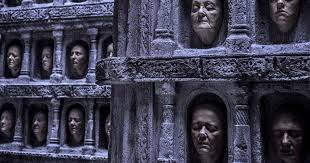Chapter 16: Host-Microbe Interactions
1/68
There's no tags or description
Looks like no tags are added yet.
Name | Mastery | Learn | Test | Matching | Spaced |
|---|
No study sessions yet.
69 Terms
Membrane ruffling
Characteristic mechanism of engulfment that some bacteria induce by triggering rearrangements of a cell’s actin; allows pathogens to enter and freely multiply within the host cells; mechanism to cross cell membranes though direct uptake by cells
Mutualism
Relationship between two organisms in which both partners benefit.
Commensalism
Relationship between two organisms in which one partner benefits and the other is unaffected.
Parasitism
Relationship between two organisms in which one partner, the parasite, benefits at the expense of the other.
Normal microbiota
The group of microorganisms that routinely colonize the body surfaces and the gut of a given type of host but do not usually cause disease.
Metagenomics
The cultivation-independent study of microbial communities or their members by analyzing the total microbial genomes in a sample taken directly from an environment.
Beneficial roles of the human microbiome
Protection against infection, stimulating adaptive immunity, promoting immune tolerance, aiding digestion, and producing essential substances (K and B vitamin production and butyrate conversion)
Secondary infection
Infection that occurs along with or immediately following another infection, usually as a result of the first infection
Opportunistic pathogen
A microbe that causes disease only when introduced into an unusual location or into an immunocompromised host (e.g., Psudomonas)
Incubation period
Interval between entrance of a pathogen into a susceptible host and the onset of illness caused by that pathogen.
Prodromal phase
A period of early, vague symptoms indicating the onset of a disease.
Convalescence
Period of recuperation and recovery from an illness.
Localized infection
Infection limited to one site in or on the body.
Systemic infection
Infection in which the infectious agent spreads throughout the body.
Bacteremia
The presence of bacterial cells in circulating blood.
Toxemia
The presence of toxins in circulating blood.
Viremia
The presence of viral particles in circulating blood
Antigen-sampling process exploitation
Exploitation of pathogens to the host’s physiological mechanisms for antigen uptake and transport to cross epithelial or mucosal membrane barriers
Actin tails
Structure formed by some bacterium to move and spread infection into neighboring cells and avoid immune detection; formed from host cell actin at one end of the bacterial cell
Phagocyte microbe destruction stages
Chemotaxis, recognition, attachment, engulfment, and fusion with lysosomes
C5a peptidase
Enzyme that degrades C5a, a signal that attracts phagocytes; mechanism to evade immune defenses by preventing encounters with phagocytes
C3b
A component of the immune system that acts as a tag on pathogens to help the immune system fight them off; marks pathogens for destruction (e.g., Streptococcus pygenes (strept throat))

Membrane-damaging toxins
Toxin that disrupts cytoplasmic membranes of eukaryotic cells to neutralize immune response; mechanism to evade immune defenses by preventing encounters with phagocytes
Capsules
A distinct, thick gelatinous material that surrounds some microorganisms used to evade phagocytes by binding host complement regulatory proteins; inactivates C3b to help pathogens to avoid destruction; mechanism to evade immune defenses by avoiding recognition/attachment (e.g., Streptococcus pneumoniae (pneumonia))
M protein
A protein in the cell walls of group A streptococci that is associated with virulence used to evade the immune system by binding to complement regulatory proteins, inactivating C3b; mechanism to evade immune defenses by avoiding recognition/attachment
Fc receptors
Protein that binds the Fc region of an antibody molecule to evade the immune system by misorienting antibodies, making the bacterial cells invisible to phagocytes; mechanism to evade immune defenses by avoiding recognition/attachment

Phagocyte survival
Some bacteria exploit phagocytes by hiding within them, avoiding antibodies; they escape the phagosome before lysosome fusion, multiply safely, or prevent fusion entirely (e.g.,Listeria monocytogenes and Shigella escape; Salmonella enterica blocks fusion; Coxiella burnetii survives in phagolysosomes)

Serum-resistant
Describes bacteria that have mechanisms to avoid the killing effect of complement system proteins (e.g., Neisseria gonorrhoeae, cleverly evades this system by mimicking host defenses, binding to regulatory proteins to delay MAC formation)
IgA protease
Enzymes that degrade IgA; acts like a key, breaking down IgA antibodies in secretions to avoid antibody recognition
Antigenic variation
Routine changes in one or more surface antigens of a microbial cell; altering antigens to escape antibody detection

Exotoxins
A toxic protein produced by a microorganism secreted or released upon bacterial cell lysis; pathogens typically colonize tissues to produce enough toxin for damage; can act locally or spread through the bloodstream, causing widespread damage depending on immune response time; can be neutralized by the immune system; “archers within or outside the fortress”
Toxoid
Modified form of a toxin that is no longer toxic but is able to stimulate the production of antibodies that will neutralize the toxin
Antitoxin
An antibody preparation that protects against a given toxin
Neurotoxin
Category of toxins that damage the nervous system (e.g., paralysis)
Enterotoxins
Category of toxins that cause symptoms within the intestines (e.g., diarrhea, vomitting)
Cytotoxins
Category of toxins that damage a variety of cell types (e.g., cell lysing)
A-B toxin
Exotoxin composed of an active subunit (A subunit) and a binding subunit (B subunit); B attaches to specific cell receptors, guiding the toxin, and A disrupts cell function; helps in vaccine development
Membrane-damaging toxin
Toxin that disrupts cytoplasmic membranes of eukaryotic cells, causing cell lysis
Pore-forming toxin
Membrane-damaging toxin that inserts into phospholipid membranes, forming channels that allow uncontrolled passage of fluids, fluid leakage
Phospholipase
Membrane-damaging toxin that enzymatically removes the polar head group on phospholipids, contributing to conditions like gas gangrene
Superantigens
Toxins that non-specifically activate many T cells binding to MHC class II molecules and T-cell receptors, resulting in excessive cytokine production that leads to cytokine storm, potentially leading to severe reactions and sometimes fatal shock; disrupt normal immune regulation
Exfoliative toxins
Bacterial toxins that cause the outer layer of the skin to peel; cause scalded skin syndrome by breaking down skin layers; can spread from localized infections
Endotoxin
The lipopolysaccharide (LPS) component of the outer membrane of Gram-negative bacteria; lipid A is responsible for the toxic properties of LPS; part of Gram-negative bacteria's outer layer and cannot be turned into vaccines;systemic response can lead to sepsis, shock, and DIC; “fortress wall”
Lipid A
Component within the LPS that signals an attack by Gram-negative bacteria may helps fight infection or cause severe inflammation in the bloodstream, leading to sepsis and shock; released when bacteria break out, activating B cells at high levels
Limilus amoebocyte lysate (LAL) assay
test with horseshoe crab blood to detect endotoxin contaminated IV fluids; the blood with clot in response to trace amounts of endotoxin
Immune complex
Combination of antibody and soluble antigen capable of triggering the classical pathway of complement system activation; also called antibody-antigen complex; mechanism of damage associated with adaptive immunity that forms when antibodies bind to antigens, causing inflamation and kidney damage
Cross-reactive antibodies
Some antibodies attack the body's own tissues instead of germs, causing an autoimmune response; can potentially lead to acute rheumatic fever when antibodies against S. pyogenes are binded to normal tissues
Interferons
help limit viral spread by triggering infected cells to undergo apoptosis
Cyromegalovirus
Virus that creates fake MGC molecules to trick immune cells, avoiding the cell-mediated immune response

Methods of avoiding antibodies
Viruses can evade antibodies by moving directly between cells or forming syncytia, as seen in HIV; rapid antigen changes in viruses like HIV occur due to frequent mutations, outpacing antibody production; antibody-dependent enhancement (ADE) can also occur, where antibodies facilitate viral entry into cells, worsening infections like severe dengue.
Flu-like symptoms
Symptoms produced as viruses damage host cells during replication; e.g., malaise, fever, and body aches; the immune response can also cause harm, sometimes resulting in a cytokine storm
Cytokine storm
a dangerous overproduction of cytokines leading to an excessive immune reaction that can be life-threatening; includes widespread inflammation and tissue damage
Fungi in pathogenesis
organisms that cause superficial infections like ringworm and athlete’s foot by breaking down keratin; Candida albicans can cause infections in immunocompromised individuals, affecting mucous membranes; Cryptococcus species have capsules that hinder phagocytosis; dimorphic fungi switch forms based on environment, posing risks if inhaled; mycotoxins, like aflatoxin from Aspergillus flavus, can damage the liver
Protozoa and helminths in pathogenesis
organisms that invade via the intestinal tract, arthropod bites, or direct skin entry; attach to host cells using specific receptors and evade immune responses by hiding, altering surface antigens, or suppressing immunity
Koch’s second postulate
It must be isolated and grown in pure culture
collective community of microorganisms living on and within the human body; protects against pathogens by occupying attachment sites, competing for nutrients, and producing antimicrobial compounds
causes, and ethical restrictions prevent testing on humans
Molecular Koch’s first postulate
The virulence factor gene or its product should be found in pathogenic strains of the microorganism.
Molecular Koch’s second postulate
Mutating the virulence gene to disrupt its function should reduce the virulence of the pathogen.
Molecular Koch’s third postulate
Reversion of the mutated virulence gene or replacement with a wild-type version should restore virulence to the strain.
Pathogenic mechanisms
Produce toxin (that is ingested) (e.g., Clostridium botulinum (botulism) and Staphylococcus aureus (food poisoning), colonize mucous membranes and produce toxin (e.g., Vibrio cholerae (colera) and Corynebacterium diphtheriae (diphtheria), multiply within host tisues(e.g, Neisseria meningidis (meningococcal disease) and Yersinia pestis (plague) and some produce toxin (within host)(e.g, Sigella dysenteriae (shingellosis) and Clostridium tetani (tetanus)
Balanced pathogenicity
Host-parasite relationship in which the parasite persists in the host while causing minimal harm
Infection adherance
Bacteria use adhesins to attach to host receptors (specific)
Infection colonization
To overcome host defenses like lactoferrin and transferrin (bind iron to inhibit microbial growth), pathogens: produce siderophores to capture iron; pathogens evade secretory IgA antibodies through mechanisms like pili turnover, antigenic variation, and IgA proteases
Type III secretion system
Mechanism that allows bacteria to transfer gene products directly into host cells; used by some Gram-negative bacteria